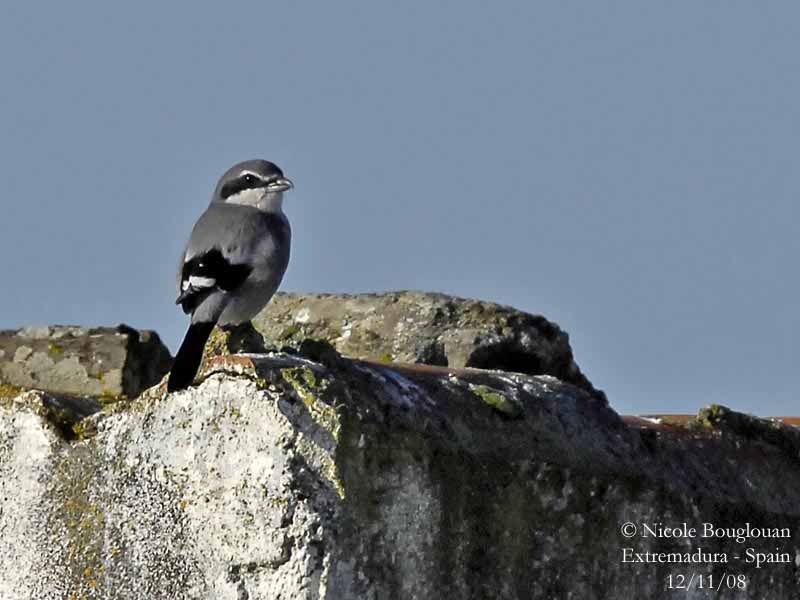
Southern Grey Shrike
Lanius meridionalis
Passeriforme Order – Laniidae Family
BIOMETRICS:
Length : 24 à 25 cm
Wingspan : 30 à 34 cm
LONGEVITY: up to 6 years
DESCRIPTION:
Southern grey shrike and Great Grey Shrike (Lanius excubitor) are now recognised as different species. Not only do they differ in some plumage details, but also in size, voice, behaviour and favoured habitat.

Lanius meridionalis has larger tarsi and a more powerful beak than Lanius excubitor. It has darker back with a brownish tinge in nape and crown. White supercilium rarely extends beyond the eye and blends into forehead. The underparts of meridionalis are pinkish grey, while excubitor’s are white, or with a light grey wash.
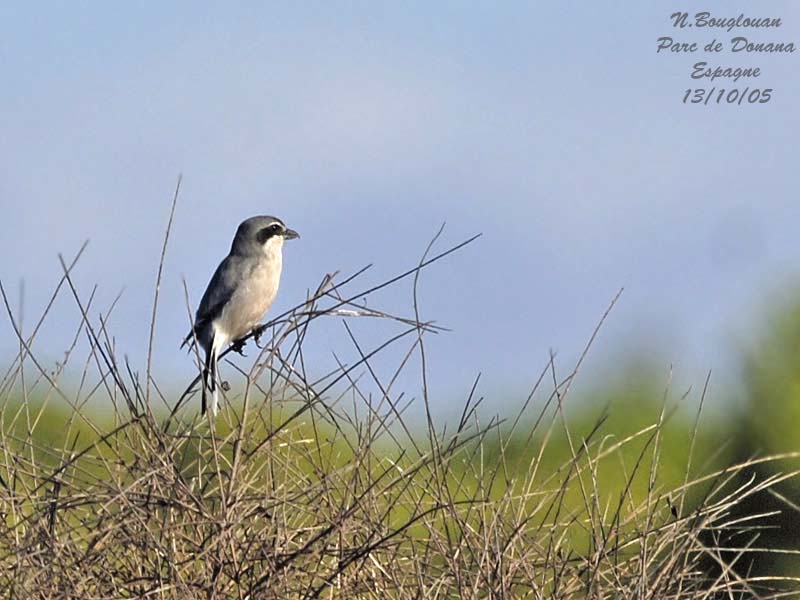
The eye patch of Southern Grey Shrike is generally larger, standing out in sharper contrast with white cheeks and rest of underparts. It has a conspicuous white wingbar. Black tail is long, with white outer feathers. Legs and feet are blackish. Slightly hooked bill is black.
Race “algeriensis” from North Africa shows black eye patch but lacks white supercilium, and it has grey breast.
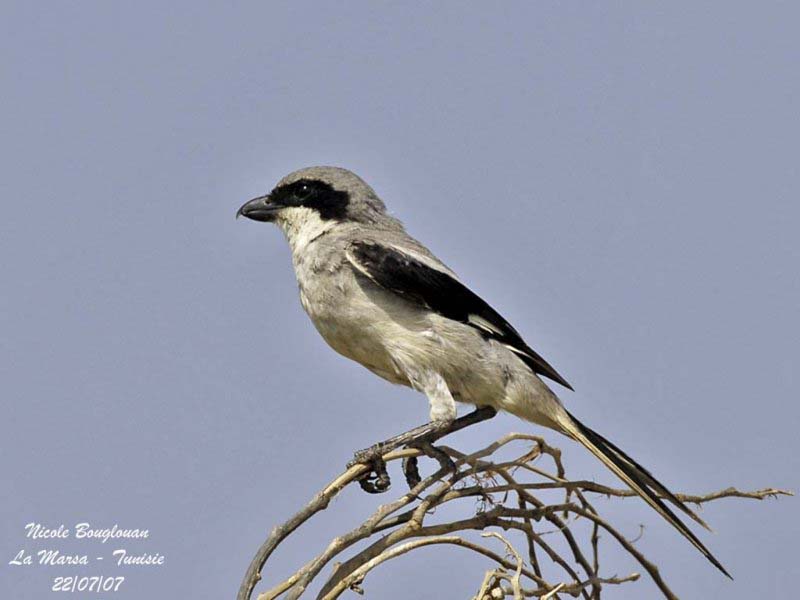
Both sexes are similar, with long and compact body and large head. Juvenile is similar to adults after lost of down. They are slightly streaked brown on breast.
VOICE: SOUNDS BY XENO-CANTO
Southern Grey Shrike’s song is a varied collection of squeaks, trills and chattering phrases. Calls include a ringing “shreee” and a nasal “shack” repeated. Alarm call is a dry “chek-chek”. It’s able to imitate some songs of other birds, to attack them.
HABITAT:
Southern Grey Shrike favours open country of various kinds, from semi-desert to farmland, and from health and bogs to partly forest tundra, with scattered trees, bushes or scrubs. It needs open areas with lots of lookout points.
RANGE:
Southern Grey Shrike breeds in Spain, except Galicia, Cantabrian coasts and the Balearics, and in Southern France. They are residents, with only some occasional short distance movements.

BEHAVIOUR:
Southern Grey Shrike perches on exposed and prominent tree or on wires or high perch where it spends most of time. While is perched, it moves the tail up and down, with its large head bowed down to the ground. This perch allows it to search some prey on ground, among weeds. Then, it dashes aggressively to the prey. It may hunt in flight, pursuing small birds and killing them. Southern grey shrike hunts scorpion, dancing around it while it is waiting for the good moment to peck its sting, and then, it eats its prey.
This species, as the other shrikes, share the habit of impaling their preys on thorn “larders”. In fact, shrikes impale preys on thorn because are not able to hang on to their prey with claws, as a raptor. So, it impales the prey by the head on thorn, and strongly, it strips off pieces of the dead animal.
Males of Southern Grey Shrike seem to be fairly loyal to their breeding area, so it is the females that are more likely to roam further.
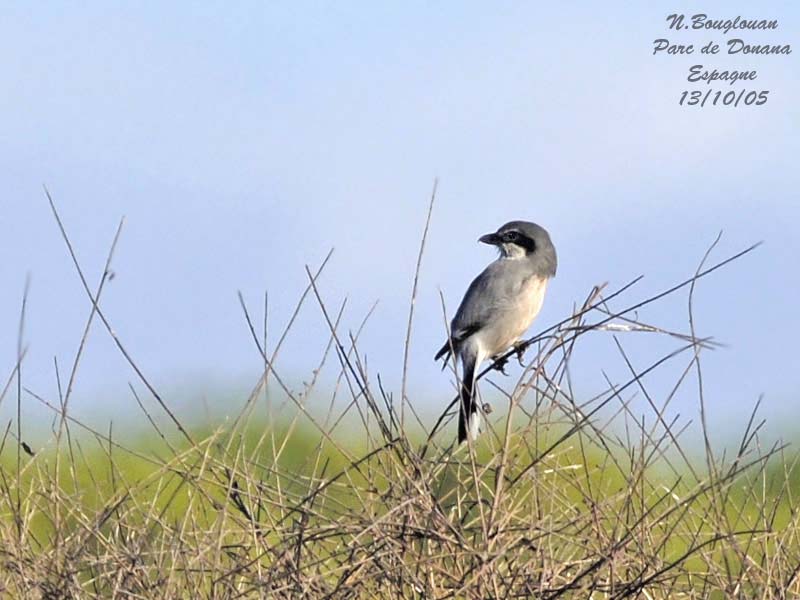
FLIGHT:
Southern Grey Shrike has an agile and rapid flight. It flies strongly, with undulating manner.
REPRODUCTION:
Southern Grey Shrike’s nest is situated at 3 to 5 metres above the ground, but also in a bush, at only one metre high, hidden in the tree or the bush. They can make the nest always in the same tree, year after year. Nest is relatively large, and built by both adults, male carrying material nest. Base is made with dry twigs, and they add a lot of moss. Then, they make a bulky structure with grasses, and lined with rootlets, wool, hair and feathers.
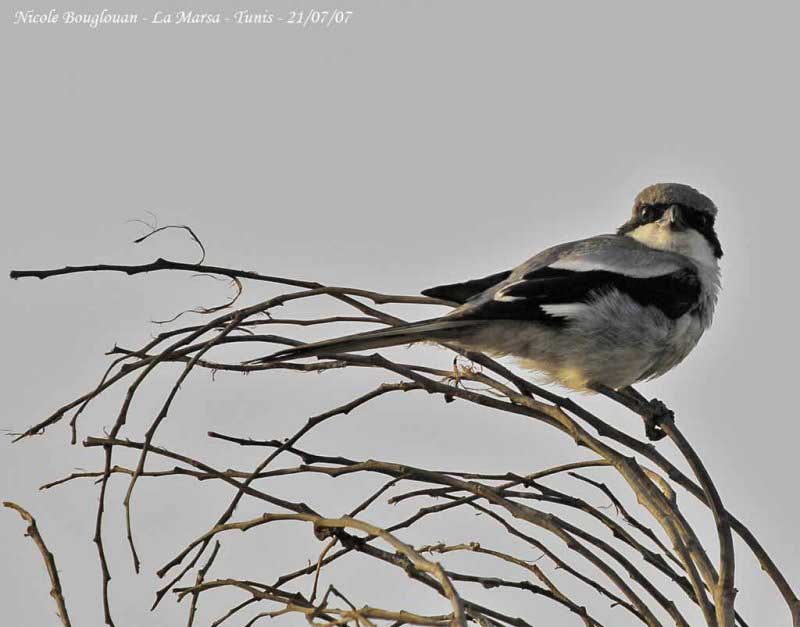
Female lays 5 to 6 greyish spotted dusk or reddish eggs. Incubation lasts about 15 days, by both adults, but more by female. Young fledge at 19/20 days, fed by parents until they are 35 to 37 days old. This species produces one brood per season, two if first lost.
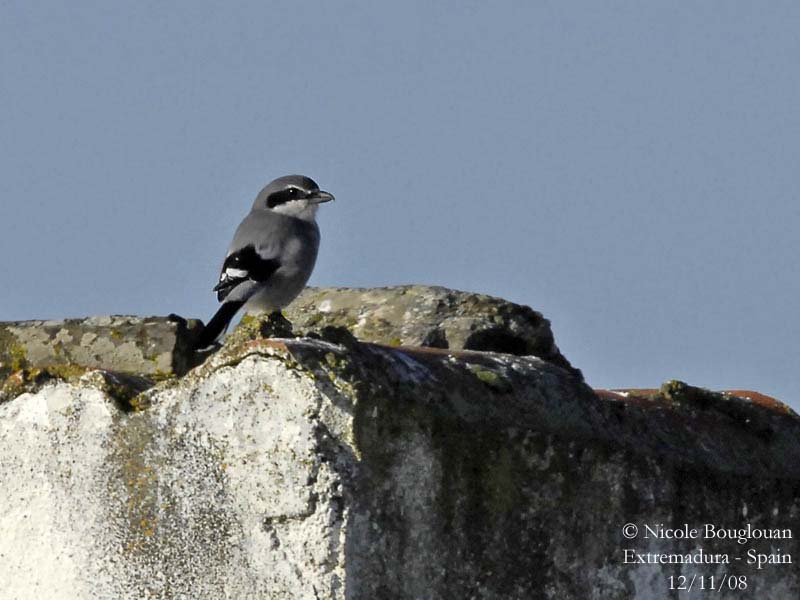
DIET:
Southern Grey Shrike feeds on small birds, from finches to blackbirds, but also small mammals, reptiles and big insects.
PROTECTION / THREATS / STATUS:
Populations are not globally threatened. But habitat loss with fragmentation of forests is a threat for this species. Agricultural development with the use of pesticides reduces populations of large insects which are eaten by Southern Grey Shrike.
Fr: Pie grièche méridionale
All : Raubwürger-meridionalis
Esp: Alcaudón Real
Ital: Averla meridionale
Nd: Zuidelijke Klapekster
Russe: Южный серый сорокопут
Sd: Ökenvarfågel
Texte et photos de Nicole Bouglouan
Sources :
THE HANDBOOK OF BIRD IDENTIFICATION FOR EUROPE AND THE WESTERN PALEARCTIC by Mark Beaman, Steve Madge - C.Helm - ISBN: 0713639601
LE GUIDE ORNITHO par Grant, Mullarney, Sven - Delachaux Niestle - ISBN: 2603011421
Pájaros de España (JL Beamonte)
Wikipedia (Wikipedia, The Free Encyclopedia)